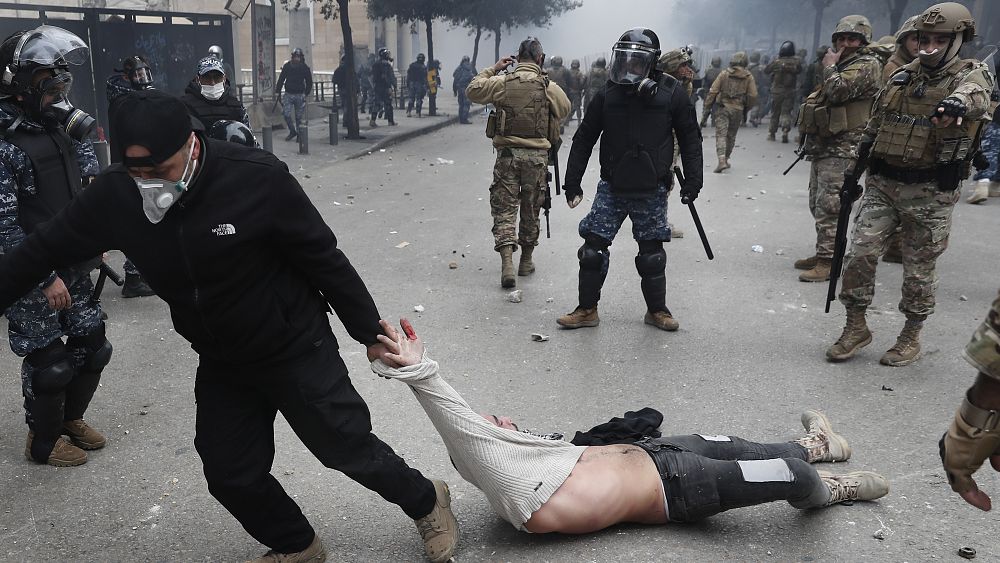
[ad_1]
The outbreak of protests in Sudan and Algeria led to the removal of the presidents of the two countries from power, and both Iraq and Lebanon have witnessed unprecedented popular movements. Here is a reminder of the protest movements in the Arab world and Iran since the end of 2018.
In 2011, the “Arab Spring” led to the fall of the regimes of President Zine El Abidine Ben Ali in Tunisia and Hosni Mubarak in Egypt.
To this day, Tunisia is still the only country to continue the democratic transition. In other countries, such as Syria, Yemen and Libya, protests against the authorities have turned into ongoing wars.
Sudan
On December 19, 2018, hundreds of Sudanese protested against the threefold increase in the price of bread, and the protests became weekly and quickly demanded the departure of Omar al-Bashir, who had ruled the country for 30 years.
On April 6, 2019, the protest movement turned into a sit-in in Khartoum in front of the army headquarters.
On the 11th of this month, the army abducted al-Bashir and a transitional military council was formed, but thousands of demonstrators continued their sit-in outside the army headquarters, describing what had happened. passed as a “coup”.
Armed men in military uniform broke up the sit-in on June 3.
After negotiations, in mid-August, an agreement was signed between the army and the leaders of the protest, negotiated by Ethiopia and the African Union.
Then Sudan formed the Sovereign Council, which comprises the majority of civilians and is headed by a military man, to oversee a transition period of more than three years that is supposed to lead to elections.
The repression of the demonstrators left more than 250 dead, according to a committee of doctors close to the protest movement.
– Algeria –
On February 22, mass protests began against President Abdelaziz Bouteflika’s candidacy for a fifth term, after his health deteriorated since he suffered a stroke in 2013.
On April 2, Bouteflika resigned under pressure from the streets and the army, but the demonstrators continued to take to the streets in large numbers every Friday, insisting on the departure of all symbols of the “system” inherited from the two decades of successive reigns of Bouteflika, including the Chief of Staff, Lieutenant General Ahmed Gaid Salah, who He became the strongman of the country.
These demonstrations did not prevent the presidential elections from being held on December 12, and despite a record abstention rate, Abdel Majid Tebboune was elected president.
– Egypt –
On September 20, hundreds of people demonstrated in Cairo and other cities to demand the departure of President Abdel Fattah El-Sisi, who has ruled the country since 2014. A night sit-in was held in the capital on Tahrir Square, symbol of the 2011 revolution that overthrew former President Mubarak.
The unexpected protests erupted under oppression from the Sisi regime, after a businessman living in exile posted videos accusing the president of corruption.
A week later, limited protests took place and since September 20, nearly four thousand people, including lawyers and academics, have been arrested.
– Iraq –
After appeals on social media, Iraqis demonstrated in Baghdad and the south of the country from October 1 to 6 against corruption, unemployment and the deterioration of public services.
The protests ceased during Hussein’s quarantine, then resumed on the evening of October 24, on the eve of the first anniversary of the inauguration of Adel Abdul Mahdi’s government.
The protests gained momentum with massive rallies in Baghdad and the south calling for “regime overthrow”. The protests led to the closure of schools and departments, while the crackdown continued and intensified.
Protesters were exposed to neighboring Iran, due to its strong influence in Iraq, and protesters set fire to its consulate.
On December 1, the House of Representatives accepted the government’s resignation, and in early February a prime minister was tasked with forming a new government.
Despite the decline of the movement, hundreds of demonstrators still take to the streets to demand a new political class and reform the system.
It should be noted that the toll of the repression of demonstrations and acts of violence in Iraq amounted to around 550 dead and 30,000 injured, according to an official toll.
– Lebanon –
On October 17, the government announced a tax on calls made through Internet messaging applications, amid a severe economic crisis. This measure, although it was later withdrawn, sparked the anger of the Lebanese, who immediately took to the streets.
Tens of thousands of Lebanese gathered in Beirut and Tripoli in the north, as well as in Tire in the south or Baalbek in the east, to demand the departure of a ruling class considered corrupt and the closure of many roads.
On October 29, Prime Minister Saad Hariri resigned and a new government was formed, led by Hassan Diab on January 21, but he did not satisfy the streets.
Iran
On November 15, demonstrations took place in the streets after the news of a significant increase in the price of fuel, and the protest movement spread to around 100 towns.
According to Amnesty International, more than 300 people were killed during the three days of repression, a toll denied by Tehran, and the United Nations says that around seven thousand people were arrested.
Source link